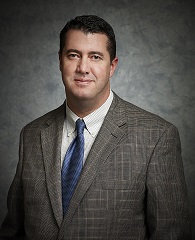Jason Cagle, CFO, and Michael Stroup, senior vice president of acquisitions, of United Surgical Partners International share a forecast for mergers and acquisitions activity in the coming year.
Hospitals and health systems are creating strategic mergers and scouring the market for acquisitions. Physicians are considering stepping under the hospital umbrella to weather the changes in healthcare and creating group partnerships to find strength in numbers. Consolidation in the shifting healthcare landscape is a clearly visible trend.
Though 2013 has been a slower year for mergers and acquisitions in the ambulatory surgery center industry, United Surgical Partners International executives Jason Cagle, chief financial officer, and Michael Stroup, senior vice president of acquisitions, predict an increase in M&A activity for the year to come.
 Affects of healthcare reform
Affects of healthcare reform
Healthcare reform is reshaping the industry and driving acquisition activity in the ASC sector from both the buyer and seller perspectives. "As reform starts to take hold in markets, some of the standalone or small chain ASCs will be looking for a strategic partner to remain competitive," says Mr. Cagle. Whether through an acquisition deal or affiliation agreement, ASC management and development companies or hospitals represent strategic partnership options for surgery centers.
From the perspective of ASC physician-owners, running a center independently means shouldering a great deal of risk and burden to remain competitive and compliant with the new sets of requirements. "Physicians' daily jobs at standalone centers are becoming more difficult," says Mr. Stroup. This mounting pressure plays a large role in the increased level of expected M&A activity.
and burden to remain competitive and compliant with the new sets of requirements. "Physicians' daily jobs at standalone centers are becoming more difficult," says Mr. Stroup. This mounting pressure plays a large role in the increased level of expected M&A activity.
Independent centers and physician-owners are exhibiting increased desired to participate in M&A agreements and the other side of the fence is showing equal interest. "We are seeing an increased willingness and desire from health systems to play in the ambulatory space," says Mr. Cagle. Hospitals and health systems are eager to grow through mergers and acquisitions and to gain fresh access to the low-cost, high-quality environment offered by ASCs.
Who's buying?
Hospitals, health systems and ASC management and development companies are the predominant forces behind ASC M&A activity. Which form acquisitions will take is highly market dependent.
"In some markets, standalone ASCs find it safest to partner with the local health system. In other markets, this may be impossible or undesirable," says Mr. Cagle. In the latter situation, management companies become the preferred partner. In a third scenario, a frequently used model at USPI, there is a three-way partnership between an ASC, management and development company and hospital or health system.
More than two thirds of USPI's business is through partnerships with non-profit health systems. Mr. Cagle and Mr. Stroup observe that a number of USPI's competitors are stepping into the joint venture arena as well.
CON vs. Non-CON markets
Historically, ASC markets have been heavily influenced by the presence, or lack, of a certificate of need program. M&A activity, though affected in CON states, will not be driven by certificate of need programs. "States without a certificate of need program represent slightly more fertile hunting ground," says Mr. Cagle, because these states have more surgery centers.
Independent mergers
The amount of mergers taking place between independent ASCs will be limited. A merger of this nature is extremely difficult, especially with the lack of an objective third party. Each center's leaders see the strongest value in their own center. Mergers that do take place may provide fixed cost savings through consolidation and a move to one shared facility, but this type of arrangement does not achieve the ultimate goal.
"The play is to get direct access to volume, purchasing power and reimbursement protection, which are typically hallmarks of a partnership approach, not just the merging of two centers," says Mr. Cagle. "Size for the sake of size is not enough given the challenges presented by reform." Hospitals, health systems and ASC companies are the big players to watch in the M&A field.
Mergers of this type are more likely for physician groups. "We are seeing this happen more on the practice side than the surgery center side. When large practices join together, they are able to have more influence over where their future is headed," says Mr. Stroup.
Looking to the future
Though the immediate pressures of healthcare reform, such as competition for physicians and pressure to obtain adequate reimbursement, are factors in the upswing in M&A activity, a great deal of the motivation comes from ASC leaders' desire to plan for the future of healthcare. Narrowing networks are one of the most important issues, according to Mr. Cagle.
"It is going to be a world of 'have's' and 'have not's.' ASCs are either going to be a part of a particular ACO or not. ASCs don't want to be left out when these things happen," he says.
More Articles on Transactions and Valuation Trends:
8 ASC Management & Development Company Recent Financial Results
Hospital Partnerships: 4 Considerations for ASCs Before Taking the Plunge
8 Recent Ambulatory Surgery Center Acquisitions & Affiliations
Hospitals and health systems are creating strategic mergers and scouring the market for acquisitions. Physicians are considering stepping under the hospital umbrella to weather the changes in healthcare and creating group partnerships to find strength in numbers. Consolidation in the shifting healthcare landscape is a clearly visible trend.
Though 2013 has been a slower year for mergers and acquisitions in the ambulatory surgery center industry, United Surgical Partners International executives Jason Cagle, chief financial officer, and Michael Stroup, senior vice president of acquisitions, predict an increase in M&A activity for the year to come.
 Affects of healthcare reform
Affects of healthcare reformHealthcare reform is reshaping the industry and driving acquisition activity in the ASC sector from both the buyer and seller perspectives. "As reform starts to take hold in markets, some of the standalone or small chain ASCs will be looking for a strategic partner to remain competitive," says Mr. Cagle. Whether through an acquisition deal or affiliation agreement, ASC management and development companies or hospitals represent strategic partnership options for surgery centers.
From the perspective of ASC physician-owners, running a center independently means shouldering a great deal of risk
 and burden to remain competitive and compliant with the new sets of requirements. "Physicians' daily jobs at standalone centers are becoming more difficult," says Mr. Stroup. This mounting pressure plays a large role in the increased level of expected M&A activity.
and burden to remain competitive and compliant with the new sets of requirements. "Physicians' daily jobs at standalone centers are becoming more difficult," says Mr. Stroup. This mounting pressure plays a large role in the increased level of expected M&A activity. Independent centers and physician-owners are exhibiting increased desired to participate in M&A agreements and the other side of the fence is showing equal interest. "We are seeing an increased willingness and desire from health systems to play in the ambulatory space," says Mr. Cagle. Hospitals and health systems are eager to grow through mergers and acquisitions and to gain fresh access to the low-cost, high-quality environment offered by ASCs.
Who's buying?
Hospitals, health systems and ASC management and development companies are the predominant forces behind ASC M&A activity. Which form acquisitions will take is highly market dependent.
"In some markets, standalone ASCs find it safest to partner with the local health system. In other markets, this may be impossible or undesirable," says Mr. Cagle. In the latter situation, management companies become the preferred partner. In a third scenario, a frequently used model at USPI, there is a three-way partnership between an ASC, management and development company and hospital or health system.
More than two thirds of USPI's business is through partnerships with non-profit health systems. Mr. Cagle and Mr. Stroup observe that a number of USPI's competitors are stepping into the joint venture arena as well.
CON vs. Non-CON markets
Historically, ASC markets have been heavily influenced by the presence, or lack, of a certificate of need program. M&A activity, though affected in CON states, will not be driven by certificate of need programs. "States without a certificate of need program represent slightly more fertile hunting ground," says Mr. Cagle, because these states have more surgery centers.
Independent mergers
The amount of mergers taking place between independent ASCs will be limited. A merger of this nature is extremely difficult, especially with the lack of an objective third party. Each center's leaders see the strongest value in their own center. Mergers that do take place may provide fixed cost savings through consolidation and a move to one shared facility, but this type of arrangement does not achieve the ultimate goal.
"The play is to get direct access to volume, purchasing power and reimbursement protection, which are typically hallmarks of a partnership approach, not just the merging of two centers," says Mr. Cagle. "Size for the sake of size is not enough given the challenges presented by reform." Hospitals, health systems and ASC companies are the big players to watch in the M&A field.
Mergers of this type are more likely for physician groups. "We are seeing this happen more on the practice side than the surgery center side. When large practices join together, they are able to have more influence over where their future is headed," says Mr. Stroup.
Looking to the future
Though the immediate pressures of healthcare reform, such as competition for physicians and pressure to obtain adequate reimbursement, are factors in the upswing in M&A activity, a great deal of the motivation comes from ASC leaders' desire to plan for the future of healthcare. Narrowing networks are one of the most important issues, according to Mr. Cagle.
"It is going to be a world of 'have's' and 'have not's.' ASCs are either going to be a part of a particular ACO or not. ASCs don't want to be left out when these things happen," he says.
More Articles on Transactions and Valuation Trends:
8 ASC Management & Development Company Recent Financial Results
Hospital Partnerships: 4 Considerations for ASCs Before Taking the Plunge
8 Recent Ambulatory Surgery Center Acquisitions & Affiliations


